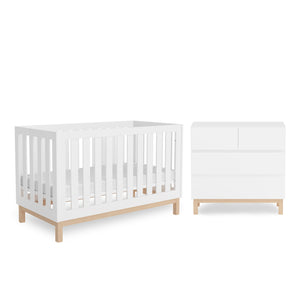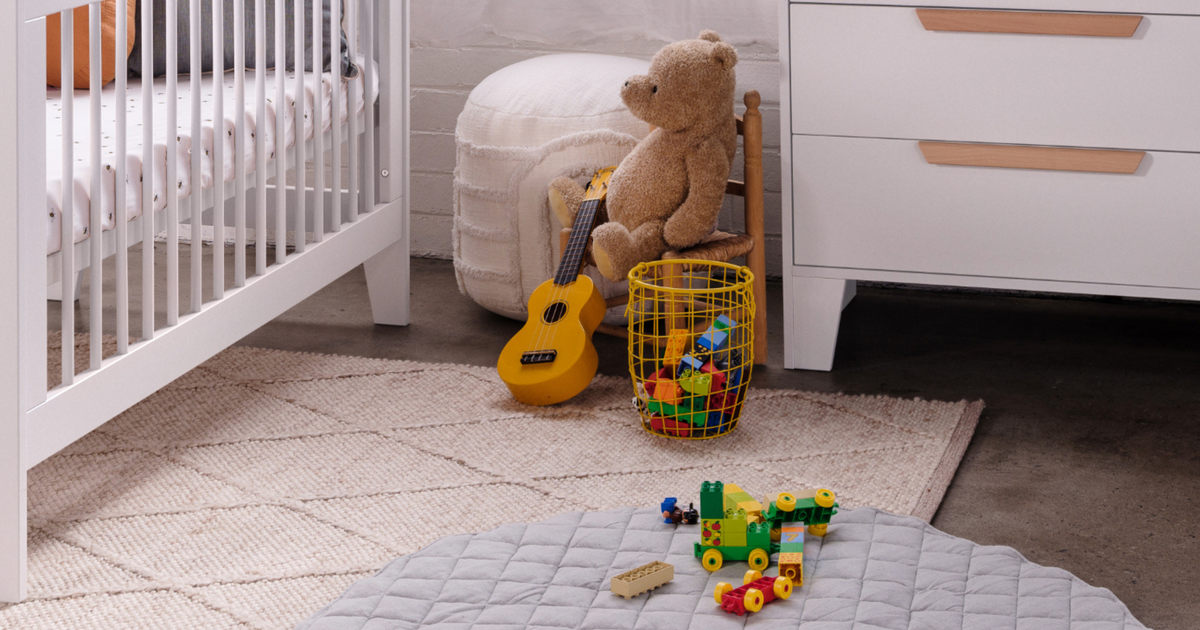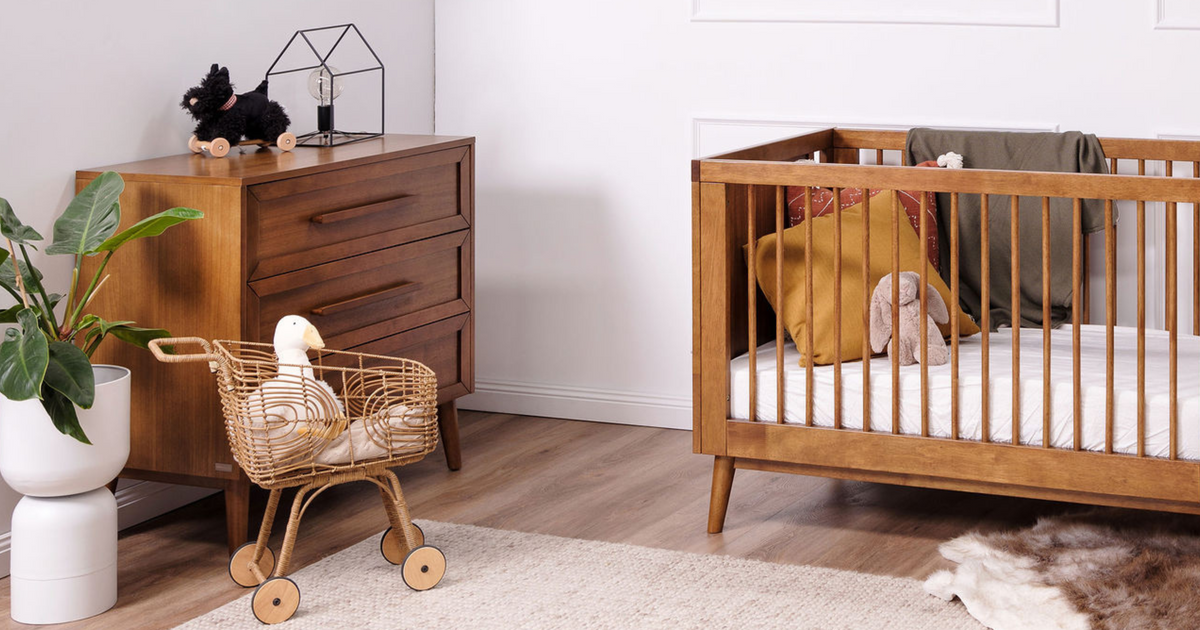Should my newborn sleep in a bassinet or a cot?
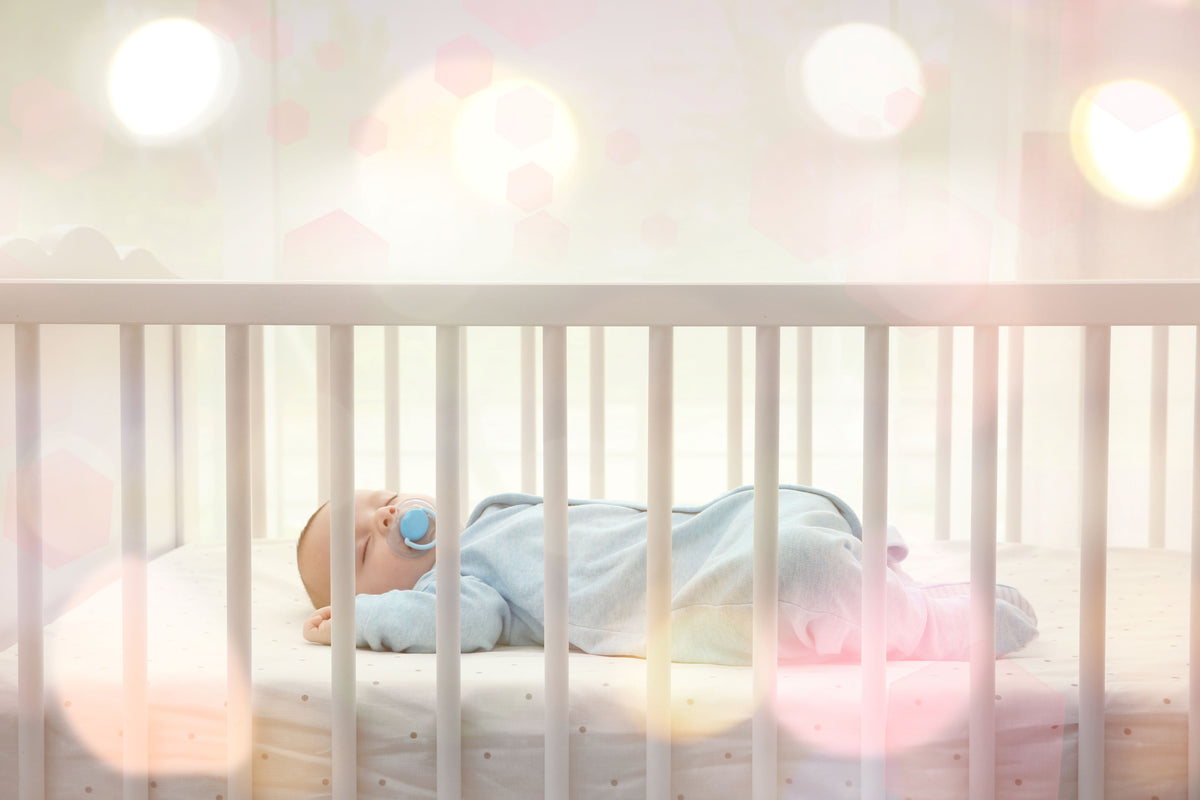
One very important decision you will make before your baby arrives is where your newborn baby will sleep. Considering that your new baby will spend up to 65% of their first 12 months sleeping, you need to consider this carefully. One of the main decisions you need to make in this regard is whether your newborn will sleep in a cot or in a bassinet. To clarify, when we refer to bassinet, this also refers to a cradle, bedside sleeper or co-sleeper.
Cots are suitable from newborn up to around 3-4 years of age. A bassinet is suitable from newborn to around 4-6 months of age, when they start to roll or sit. At this stage you should transfer them to a cot. Therefore, when you consider the first 4 years of your child’s life, you will need to buy a cot. A bassinet is an optional purchase that you may choose to make for a variety of reasons. In this article, we provide you with some key factors to consider to help you make this decision.
Safety
The most important factor to consider is always safety. Red Nose are considered the leading authority on safe sleep in Australia. They are an independent not-for-profit organisation with a goal to reduce the number of babies, toddlers and pre-schoolers who die suddenly to 0. You can read more about them here. Red Nose have six recommendations for safe sleeping to reduce the risk of sudden unexpected death in infancy:
- Sleep baby on back
- Keep head and face uncovered
- Keep baby smoke free before and after birth
- Safe sleeping environment night and day
- Sleep baby in a safe cot in parents’ room
- Breastfeed baby
Point 5 is the most relevant point to this discussion. Red Nose strongly recommend sleeping in the same room as your baby for the first 6-12 months. See their article on this topic: room sharing with baby. They also recommend that your baby sleep in a cot. This is because there is no mandatory standard for bassinets in Australia. There is a mandatory standard for cots in Australia. When buying a cot that meets the Australian standards, you know that it meets the minimum safety standards.
However, the fact that there is no Australian standard for bassinets does not necessarily mean that bassinets are less safe, it just means that if you do decide to purchase a bassinet you will need to be more vigilant to ensure you are buying a safe one. While you aren’t guaranteed that bassinets sold in Australia meet a minimum safety standard, there are some important things you can check yourself. This includes (as per this Product Safety Australia article):
- Ensure the sides of the bassinet are at least 300 mm higher than the top of the mattress base.
- Ensure it has a wide stable base and a sturdy bottom so that it won’t tip over.
- Ensure the mattress fits well and is firm, smooth and no more than 75 mm thick.
- If the product has folding legs, make sure it cannot accidentally fold during use.
Another important point regarding safety is how long you use a bassinet for. Once your baby starts to roll or sit, the bassinet may no longer be safe as it is more likely to tip and usually has lower sides than a cot. Therefore, even if you ensure you are buying a safe bassinet, you also need to ensure you transfer them to a cot before they’re too old for the bassinet.
Size
A bassinet takes up a lot less space than a cot. Given that it is recommended that your baby sleeps in the same bedroom as you for the first few months, a bassinet may be a practical option as it takes up less space in your bedroom. Then when your baby grows up, you can transfer them to a cot in their own room.
However, keep in mind that you will need to store the bassinet once you don’t need it any more – therefore a fold-able option may suit you best. If your options are to sleep your newborn in their own room in a cot, or in the same room as you with a bassinet, we would definitely recommend purchasing a bassinet to ensure you can share a bedroom.
Functionality
In the first few months of your baby’s life there will be a lot of time spent putting your baby to sleep, waking your baby up for feeding or resettling your baby. This means your baby will be going in and out of their cot or bassinet many times each day and night.
Consider the functionality of a cot versus a bassinet in this regard. A bassinet usually holds your baby higher and has lower sides meaning it is easier to access your baby. This is especially important during the night – if you can resettle or take your baby out for feeding during the night without hopping out of bed, you will definitely appreciate this in the first few months of their life.
Some bassinets also have a drop-down side, meaning you can have the bassinet right next to your bed with the side lowered for even easier access. These are often called a bedside sleeper or co-sleeper.
Another important point to consider is portability. A bassinet is much more portable, meaning you can move it during the day so baby can sleep near you. Or change which side of the bed it is on at night-time. Or move it to a different bedroom so your baby can be cared for by someone else to give you a chance for some much needed rest. On the other hand, cots are quite heavy and with most cots, once they are setup, they won’t fit through a standard doorway.
If your baby has reflux/colic, you may want to sleep your baby on a slight incline. Red Nose always recommend sleeping on a flat surface. However, some pediatricians may recommend sleeping your child on an incline to help with the symptoms of reflux/colic. A lot of bassinets will be height adjustable at each end, allowing you to set one end slightly higher than the other end. Cots, however, do not usually have this functionality.
Style
Some parents really like specific styles of bassinets and you can achieve a look that you can’t achieve with a cot. In a cot, your newborn can look a bit lost with so much space around. A bassinet is much smaller and may suit your style. We would strongly encourage you to consider the safety to ensure it is safe and meets your style. This is especially important if you are considering purchasing a second-hand bassinet.
Discover the stunning Babyrest rattan bassinet range here →
Budget
If you are on a tight budget, you would be better to purchase only a cot. If you have short term budget constraints, however, you may be better to purchase a bassinet now and purchase a cot a few months later. A bassinet is likely to be cheaper than a cot.
On the other hand once your baby grows up a bit you are likely to need a cot anyway. Therefore, the upfront cost will be less with a bassinet as you will not need a cot straight away. However, the long-term cost will be less if you just buy a cot as you won’t have the additional cost of a bassinet.
If your new baby already has an older sibling, or you’re setting up for your first child with a larger family in mind, a bassinet may save you the cost of a second cot. Consider the scenario where a second child comes before your first child is ready to move out of the cot. If you want to sleep your newborn in a cot, you will need to buy another cot.
However, if your first child is likely to be ready to move out of the cot in the next 4-6 months, you could consider buying a bassinet for your newborn. Then by the time your second child needs a cot, your first child may be ready for a bed.
Lifespan
Cots are suitable from newborn up to around 3-4 years of age. A bassinet is suitable from newborn to around 4-6 months of age, when they start to roll or sit. At this stage you should transfer them to a cot. Therefore, you will need to buy a cot anyway. A bassinet is an optional purchase that you may choose to make for a variety of reasons.
In summary, we don’t believe there’s a clear recommendation to either sleep your newborn in a cot or in a bassinet. You need to make a decision that suits your circumstances and that you are comfortable with. Below is a summary of the main factors to consider.
|
|
Cot |
Bassinet |
|
Safety/Standards |
Mandatory Australian standards |
No mandatory standards |
|
Space |
Takes up more space |
Takes up less space |
|
Functionality |
More difficult to access your newborn. Not portable. |
Much easier to access your newborn. More portable so you can change location to suit requirements. |
|
Budget |
More expensive but longer lifespan. Will most likely need to buy a cot anyway |
Cheaper upfront but only lasts a few months. Then would need to buy a cot anyway |
|
Lifespan |
Suitable from newborn up to around 3-4 years of age |
Suitable from newborn up to around 4-6 months |
If you would like further assistance regarding your nursery sleep essentials, please be free to reach out to our team, we’d be glad to help. Contact us here.
Discover the Babyrest Bassinet range
Learn all about about the new Aria Bedside Sleeper; a 2-in-1 bassinet/co-sleeper incorporating 360° mesh sides and 8 height positions.
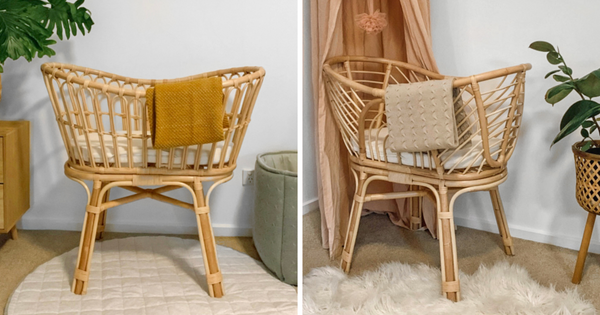
And the stunning hand-crafted Daphne and Olive rattan bassinets for an eco-conscious choice designed in Australia.
Or discover our Babyrest cot range, including the stunning Tommi Cot.
Discover the full Babyrest cot range.
Other sleep related articles:
- Are pram bassinets safe for overnight sleeping?
- What makes bamboo bedding so great for babies?
- How this Aussie mum finally found the perfect cot mattress
- What's the ideal room temperature for my baby?
- Are expensive baby and toddler mattresses worth it?
- What makes lambswool so great for babies?
Keep reading:
- Tips for taking your newborn home from the hospital
- How safe is your nursery? Your 10-step safety checklist
- Why rattan is an eco-conscious nursery choice
- How to clean and maintain your pram
- Is it safe to buy second-hand nursery items?
- What Aussie parents should know about car safety for babies and toddlers
